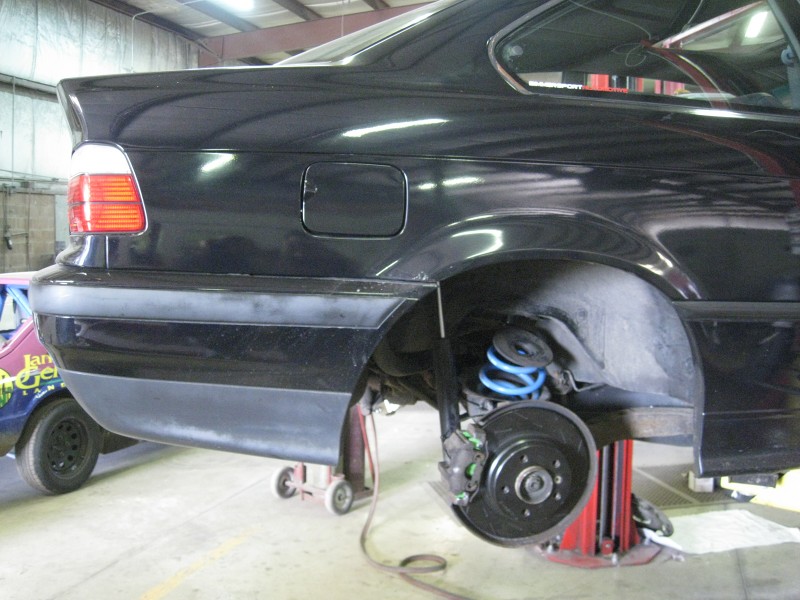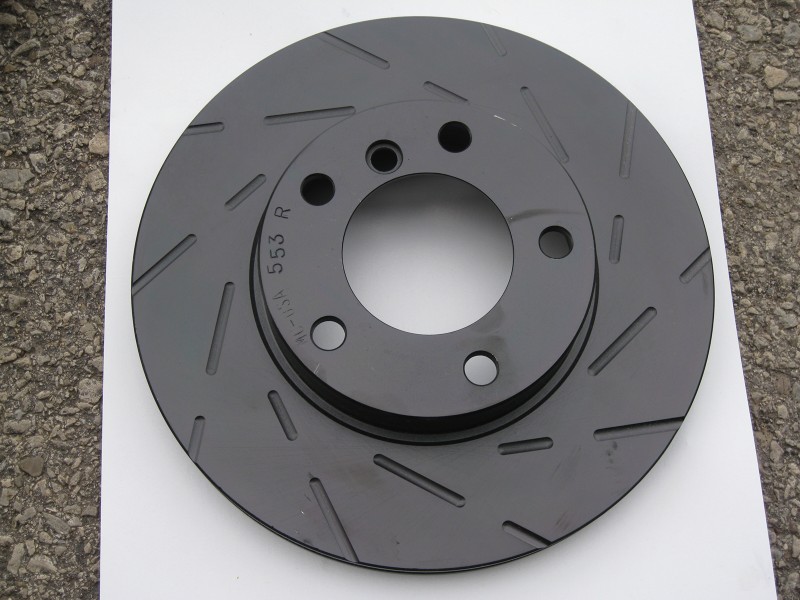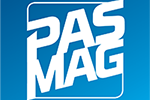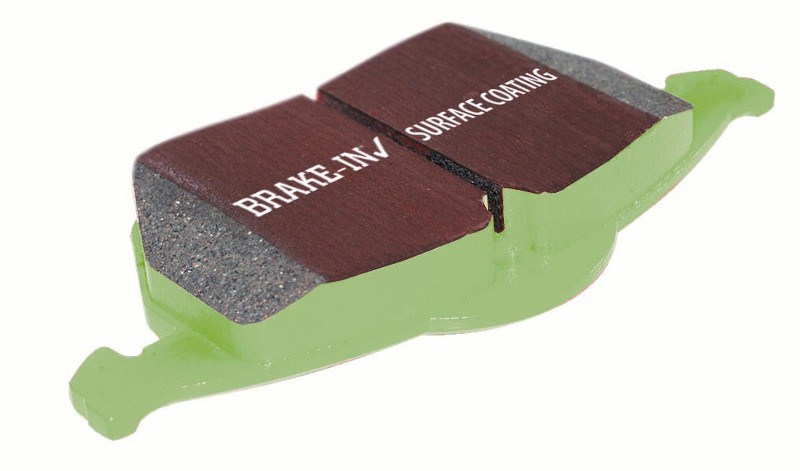There isn’t much left to be desired for BMW braking power from the factory. Right out of the box, the systems are capable of stopping these flying sport sedans and coupes in a hurry without the need for expensive multi-piston systems. Known as the “kings of the floating caliper” these aging designs are still found on some BMW models today. In this install, we took a braking system that is almost 20 years old and brought it up to a more modern specification with a level of performance that would be on par with today’s sports sedans.
Equipped with ABS, this ‘92 318iS has been though many pads and rotors in its service life. Most recently, the last set of rotors were cross-drilled and equipped with a ceramic brake pad. The existing system offered capable  braking, low dust and low noise so we wanted to get more performance out of it without sacrificing too much in these areas. Typically, the rule of thumb is the more aggressive the pad, the more noise and more dust. When it comes to the rotors, the cross-drilled design has advantages for heat dissipation and gas evacuation but is prone to cracking and warping. Under extended heavy braking, many cross-drilled rotors will form hairline cracks around the holes and become warped over time causing annoying vibration.
braking, low dust and low noise so we wanted to get more performance out of it without sacrificing too much in these areas. Typically, the rule of thumb is the more aggressive the pad, the more noise and more dust. When it comes to the rotors, the cross-drilled design has advantages for heat dissipation and gas evacuation but is prone to cracking and warping. Under extended heavy braking, many cross-drilled rotors will form hairline cracks around the holes and become warped over time causing annoying vibration.
EBC Brakes has set out to change the rules governing simple pad and rotor upgrades. The UK-based company makes friction materials for anything that moves including cars, motorcycles, trucks, planes and even bicycles! Well known for their line of brake pads, EBC has added a few new products to their lineup and modified existing products to work well with them. Their new line of EBC Ultimax Slotted Rotors (USR) features a slotted design in order to evacuate heat and gases and to resist warping. The USR comes with a special black PHP coating that quickly wears off, making the contact surface a shiny silver color within minutes but it remains on other areas to prevent corrosion. The coating interfaces with the new “BRAKE-IN” coating now found on top of all of their pads (including the EBC Greens we tested) to expedite the bedding-in process as well. The mild abrasive surface scrubs off the PHP coating and produces a perfect transfer film every time.
After the brakes were installed and all parts reassembled with anti-seize and the system topped up with a DOT 3 fluid. The BMW wear sensors were replaced with new ones, which interface seamlessly with all EBC products. During the road test, EBC strongly recommends against heavy application of the brakes (also known as dragging) for the first 160km (100mi). For the following 160km (100mi) after that, more pressure can be added during all braking situations, but drivers should never drag the brakes.
After the break-in period was complete, it was time to head out in a safe area (not on public roads) for some heavy stabs at the EBC brakes. Take the car up to 100km/h (60mph) and jam the brakes all the way down to 15km/h (10mph). After five of these aggressive decelerations, drive freely to cool the brakes with no full stopping for 15 minutes to create a proper transfer film. Braking will be dramatically improved but optimal performance may not be seen for as much as 2,400km (1500mi).
We immediately took the 318iS to the track to see how the brakes performed under extreme conditions. The test track is the 2.0km course at Toronto Motorsports Park, a flat elevation track with loads of tight turns, chicanes and a long straight, really gives the brakes a real workout. We started out with some warm up loads to get some heat into the Falken Azenis RT-615 tires and the brakes themselves. When the checked flag fell (yes, we had full flags for our track day) the first hurdle for the BMW would be turn one at the end of a straight. While our project Skyline GT-R hits 200km/h on this straight, the 318iS is barely scraping 150km/h but it doesn’t need to scrub too much speed since the 90-degree right turn is extremely wide in this area. You can clip the apex in the triple digits and maintain the momentum. For a car with only 140hp, ‘momentum’ really is the key- you have to brake late, scrub off speed quick and then get back on the gas to turn quick lap times.
After 10 or so laps, we were still impressed with the EBC system, which showed almost no indication of fade. Since the rotors are slotted and we used them less because they generate loads of friction, the rotor temps were much lower than the other 10 or so vehicles at this invitation-only track day. When we wrapped up, the car showed minimal dust and none of the noise associated with upgraded brakes were present, and we were able to drive home comfortably.
Source:
EBC Brakes
USR Rotors & Green Pads
www.ebcbrakes.com
Related Articles
 Chopping Block: BMW Z4
Chopping Block: BMW Z4
 BMW’s Making a Manual-Only M2 with 2002 Turbo Tribute Livery
BMW’s Making a Manual-Only M2 with 2002 Turbo Tribute Livery
 2026 Honda Prelude makes its North American debut
2026 Honda Prelude makes its North American debut
 August Event Calendar 2025
August Event Calendar 2025
 Chopping Block: Acura TLX
Chopping Block: Acura TLX
 Hyundai unveils 641-horsepower 2026 IONIQ 6 N
Hyundai unveils 641-horsepower 2026 IONIQ 6 N





